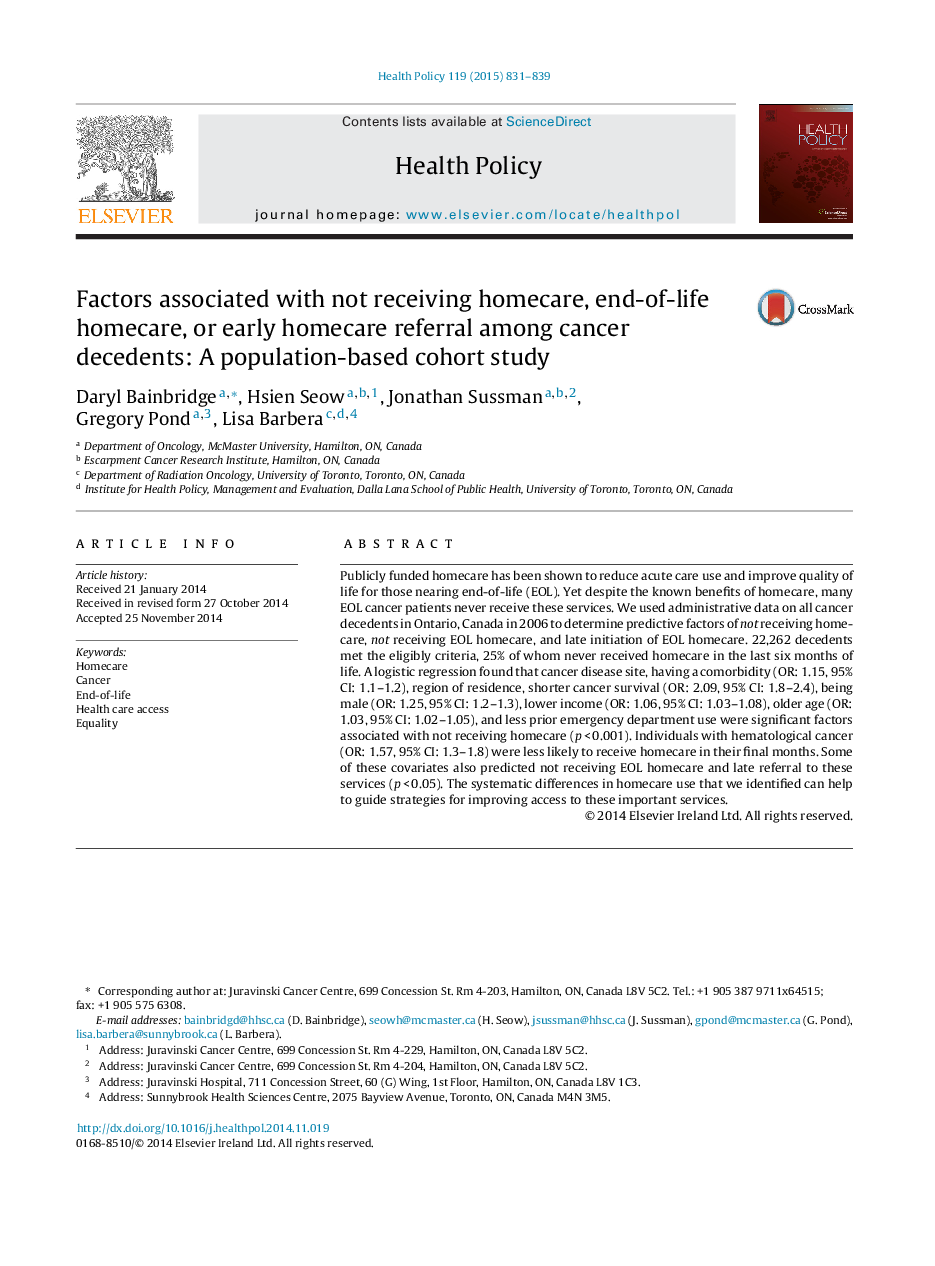| Article ID | Journal | Published Year | Pages | File Type |
|---|---|---|---|---|
| 6239281 | Health Policy | 2015 | 9 Pages |
Abstract
Publicly funded homecare has been shown to reduce acute care use and improve quality of life for those nearing end-of-life (EOL). Yet despite the known benefits of homecare, many EOL cancer patients never receive these services. We used administrative data on all cancer decedents in Ontario, Canada in 2006 to determine predictive factors of not receiving homecare, not receiving EOL homecare, and late initiation of EOL homecare. 22,262 decedents met the eligibly criteria, 25% of whom never received homecare in the last six months of life. A logistic regression found that cancer disease site, having a comorbidity (OR: 1.15, 95% CI: 1.1-1.2), region of residence, shorter cancer survival (OR: 2.09, 95% CI: 1.8-2.4), being male (OR: 1.25, 95% CI: 1.2-1.3), lower income (OR: 1.06, 95% CI: 1.03-1.08), older age (OR: 1.03, 95% CI: 1.02-1.05), and less prior emergency department use were significant factors associated with not receiving homecare (p < 0.001). Individuals with hematological cancer (OR: 1.57, 95% CI: 1.3-1.8) were less likely to receive homecare in their final months. Some of these covariates also predicted not receiving EOL homecare and late referral to these services (p < 0.05). The systematic differences in homecare use that we identified can help to guide strategies for improving access to these important services.
Related Topics
Health Sciences
Medicine and Dentistry
Public Health and Health Policy
Authors
Daryl Bainbridge, Hsien Seow, Jonathan Sussman, Gregory Pond, Lisa Barbera,
